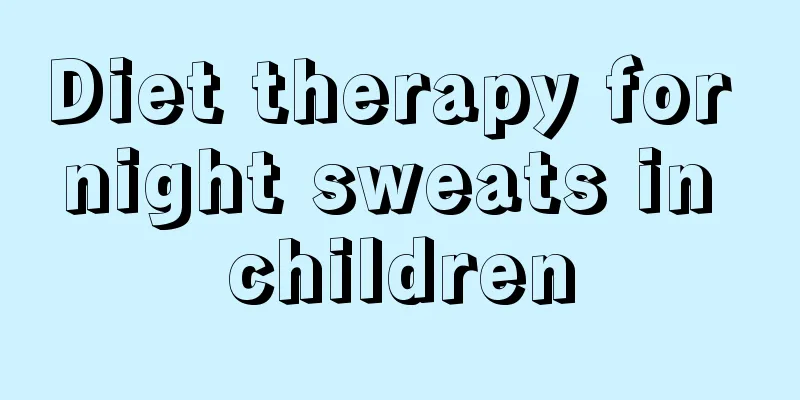Symptoms of gastroesophageal reflux in children

|
Gastroesophageal reflux disease in children mainly occurs in children. It is mainly because children's esophagus is relatively fragile and their digestive ability is relatively weak, so gastroesophageal reflux in children occurs. The occurrence of gastroesophageal reflux in children is closely related to the diet we give them. I hope mothers can pay attention to it and treat the symptoms of gastroesophageal reflux in children correctly. Gastroesophageal reflux is a common digestive tract disease in adults. Gastroesophageal reflux in children is more common in the neonatal period and infants, accounting for about 50%. Most cases resolve spontaneously 12 to 18 months after birth, mainly due to incomplete development of the lower esophageal sphincter. In a few cases, symptoms persist until around 4 years of age. The disease can cause respiratory arrest, suffocation and even sudden death in the neonatal period. The disease occurs in infancy and childhood and can cause respiratory diseases and developmental and nutritional malnutrition. There are many methods for diagnosing gastroesophageal reflux, but X-ray examination is still an important means. This method can be used to detect gastroesophageal reflux in children. Under X-ray fluoroscopy, not only can it be determined whether reflux exists, but the form of reflux can also be directly observed, the reflux volume can be estimated, the esophagus's ability to clear refluxed materials, and the gastric emptying situation can be estimated. From the reflux classification, it was found that gastroesophageal reflux in children is mostly mild, and the incidence of gastric and duodenal inflammation and ulcers is quite high. Treatment with gastrointestinal agonists such as domperidone or prebos alone is difficult to be effective, but satisfactory results can be achieved by combining treatment with H2 receptor antagonists such as ranitidine and antibiotics. The cardia function of children is not yet fully developed, so vomiting may occur if they exercise vigorously or cough after feeding. Do not feed too much each time. After feeding, it is best to let the child lie on the adult's shoulder and pat the child's back with your hand to allow the inhaled air to escape. After feeding, be gentle and use less movement when picking up and putting the child down. If the child is shaken too violently, you must pay attention to sleeping on your side and turning sideways and lowering your head as soon as possible to let the child vomit when vomiting, so as to avoid choking the respiratory tract, aspiration pneumonia, or even suffocation, which may lead to life-threatening danger. This article introduces the symptoms of gastroesophageal reflux in children. I hope you can pay attention to it in your life. When your child suffers from pediatric gastroesophageal reflux disease, it is recommended that you take your child to the hospital for examination in time, listen to the doctor's advice to take medication, and control your child's eating problems. |
<<: Why do children get gingivitis?
>>: What are the symptoms of gastroesophageal reflux in children?
Recommend
Black spots on your child’s teeth?
Generally speaking, when babies start to grow tee...
What is the development standard for a 13-month-old baby?
The growth and development of a baby requires a p...
Why does a baby sneeze and have a runny nose?
The coming of a baby into this world brings us a ...
What to do if your child coughs without phlegm
It is quite common for children to cough without ...
How to reduce swelling and stasis after a child falls
Children are lively and active by nature. They ru...
What should I do if my child has astigmatism?
Astigmatism is a common eye disease, characterize...
Babies who sleep lightly are easily frightened, parents should pay attention
Scientists have clearly stated that deep sleep is...
A lump under the child's eyes
A lump under a child's eye may be caused by a...
What should I do if a girl has eczema?
Children are prone to eczema. In the summer, pare...
Methods for relieving cough and reducing phlegm in children
Children are the focus of every family's care...
What are the effective methods for treating athlete's foot in children?
Athlete's foot is not just a disease exclusiv...
What to do if children have mild anemia
There are many symptoms of anemia in children. Fi...
Can children with autism be cured?
Parents of children with autism find it particula...
Is it normal for children to shed tears when they have a cold?
Cold is a common disease in winter. This kind of ...
What to do if your child has a cough and fever
Cough and fever are symptoms, and when these symp...









